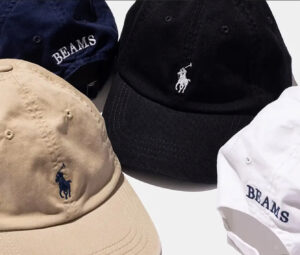Today is World Whisky Day, which means one thing above all: permission. Permission to pour something golden, peaty, complex, and strong into a glass and raise it not just in celebration, but in communion. A global excuse to drink whisky on a Saturday isn’t just a fine idea—it’s proof that someone, somewhere, understands how we feel.
But this day isn’t just about indulgence. It’s about appreciation. Whisky isn’t simply a drink; it’s a ritual, a heritage, a contradiction. It’s wild and controlled, ancient and experimental, rural and cosmopolitan. It’s made in silence and shared in noise. And on this one sacred Saturday, it gets the attention it deserves.
A Drink with a Memory
Let’s begin with a simple truth: whisky remembers. Every drop tells a story of place, time, weather, wood, grain, fire, and patience. It holds onto things. It soaks up years. The whisky in your glass might have been aging since your teenage years—or even longer. It may have started its life while a different government was in power, while different lovers held hands, while different wars were being fought.
And that’s the beauty of it. Whisky is a drink that insists on time. In a culture drunk on immediacy, whisky slows things down. It tells us: wait. Let it breathe. Let it open. Let it whisper.
In Scotland, they say you don’t own a bottle of whisky—you’re just looking after it for the next generation. It’s not just alcohol. It’s legacy in liquid form.
Origins: Fire, Water, and Spirit
Whisky’s roots are buried in Gaelic soil, wrapped in peat and fog and folklore. The word itself comes from the Gaelic “uisge beatha,” meaning “water of life.” The Irish and Scots were distilling spirits as early as the 15th century, and both still claim to be the drink’s original creators—an argument that, like any good dram, is best enjoyed without resolution.
The method was primitive but effective: fermented grain, distilled through copper, aged in wood. What began as monastic medicine became an illicit pastime, then an economic engine, and eventually a global symbol of sophistication.
It’s worth noting how much of whisky’s history is rebellious. Scotland’s infamous “illicit stills” were hidden in hills and glens, distilling under the nose of British tax collectors. American whiskey—especially bourbon—was born on the edge of wilderness, fermented in resistance, often by enslaved Black men who rarely got credit for their craft.
Even today, whisky retains some of that outlaw energy. It’s refined, yes—but it remembers its rough beginnings.
The Many Faces of Whisky
To speak of “whisky” as a single thing is like speaking of “music” as one sound. There’s Scotch, Irish, bourbon, rye, Japanese, Canadian, Indian, Taiwanese, and emerging micro-distilleries on every continent. Each one has its own rules, its own religion.
Scotch comes in many forms: smoky Islay malts that taste like seaweed and campfires, honeyed Highlands that go down like silk, Speyside whiskies that whisper vanilla and orchard fruit.
Irish whiskey is triple-distilled, smoother, lighter, but no less complex—think Jameson to Redbreast to Teeling.
Bourbon, born in Kentucky, sweet with corn and charred oak, is the American gospel.
Rye is spicier, drier, leaner.
Japanese whisky balances precision and poetry, often echoing Scotch but with Zen-like restraint.
Then there’s the new school—artisans in Tasmania, Sweden, India, Taiwan—who are redefining the rules with climate, technology, and ambition. World Whisky Day is not just about the classics. It’s about opening up your shelf, and your palate, to the whole planet.
The Ritual and the Rebellion
Whisky invites ritual. The choosing of the bottle. The weight of the cork. The slow pour. The swirl. The first sip. Some people build an entire personality around how they take it: neat, with a drop of water, over a giant cube, from a Glencairn glass, from a flask in the forest.
But there’s no right way to drink whisky—just honest ways. Drink it like you mean it. Whether you’re sipping a single malt in silence or shooting bourbon in a honky-tonk, the point is presence. The point is pleasure. The point is that moment, undistracted, unapologetic.
In an age of fake authenticity, whisky stays real. You can’t rush it. You can’t fake its age. You can’t mass-produce its character. Even with science and money and marketing, the best whisky still depends on time, wood, luck, and craft.
And it’s rebellious, too. Not in the “bad boy” bourbon ad way, but in the deeper sense. In the refusal to be fast. In the commitment to mystery. In the fact that a bottle aged for 21 years might not be as good as the one aged for 12—because flavor isn’t just about age, it’s about what happened in between.
What We Drink When We Drink Whisky
Why do people drink whisky? Not just because it tastes good. Not just because it gets you drunk. People drink whisky for emotional reasons. To connect. To mark something. To soften something. To remember someone.
We drink it when we lose someone. We drink it when we find someone. We drink it to celebrate and to survive. We drink it at weddings and at wakes. In every pour, there’s a little story.
Whisky is often called “masculine,” but that’s a tired label. Women have always made, poured, sold, and sipped whisky. The fastest-growing demographic in whisky today? Women under 40. Gender doesn’t define whisky. Curiosity does. Courage does.
The whisky world is evolving—and rightly so. It’s becoming less exclusive, less snobbish, more playful, more open. World Whisky Day is part of that shift. It’s a way to welcome people in. It’s an invitation.
The Marketing and the Myth
Let’s be honest: whisky marketing is a fantasy factory. Weathered men in tweed. Rustic barns. Gaelic words. Small batch. Hand-selected. Barrel-strength. There’s truth in some of it. But there’s also myth. And that’s okay.
Because whisky isn’t just a product. It’s a story. And stories, like whisky, are shaped by time and people and imagination. The trick is not to get too seduced by the label. Focus on what’s inside the glass.
A $40 bottle can change your life. A $400 bottle might not. Price isn’t truth. Taste is. And taste, like whisky, is personal.
Pouring It Forward
One beautiful thing about World Whisky Day is its global generosity. Many events raise money for clean water, education, or local causes. Distilleries open their doors. Collectors share rare bottles. Beginners ask questions. Bartenders experiment. Conversations flow.
Whisky, at its best, is not elitist. It’s democratic. It doesn’t care who you are—it just wants you to show up with respect and curiosity.
And the world is responding. Whisky tourism is booming. Virtual tastings cross continents. Young people are ditching vodka shots for smoky sips. Cocktails like the Old Fashioned and the Paper Plane are bringing whisky to the next generation.
A Saturday Worth Celebrating
And now, here we are. It’s Saturday. It’s World Whisky Day. Maybe you’re already holding a glass. Maybe you’re deciding what to open. Maybe you’re new to this and wondering where to start.
Here’s what to say:
- Don’t worry about the rules.
- Try something you’ve never had.
- Drink with someone you like—or in peaceful solitude.
- Taste slowly.
- Let it warm your chest and your memory.
- Raise a toast to whoever needs one.
Because this day is for all of us—the purists, the newbies, the sippers, the skeptics. It’s a moment to pause and honor a spirit that has outlasted empires, borders, and trends. A drink that still brings people together, even across oceans.
It’s not just about whisky. It’s about everything whisky stands for: patience, flavor, complexity, resilience.
And yes, it’s about having an excuse to drink on a Saturday. A good one.
Slàinte. Cheers. Santé. Kanpai. Skål. Salud.
Whatever language you say it in, the meaning is the same: to your health.
And on World Whisky Day, we mean it more than ever.
No comments yet.






